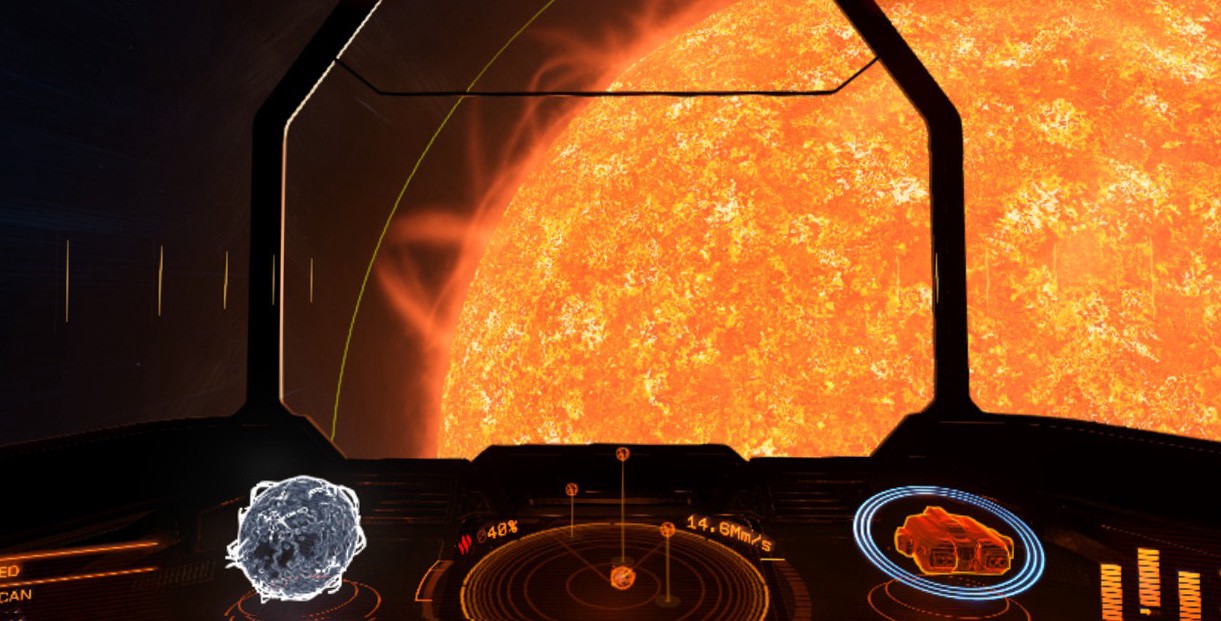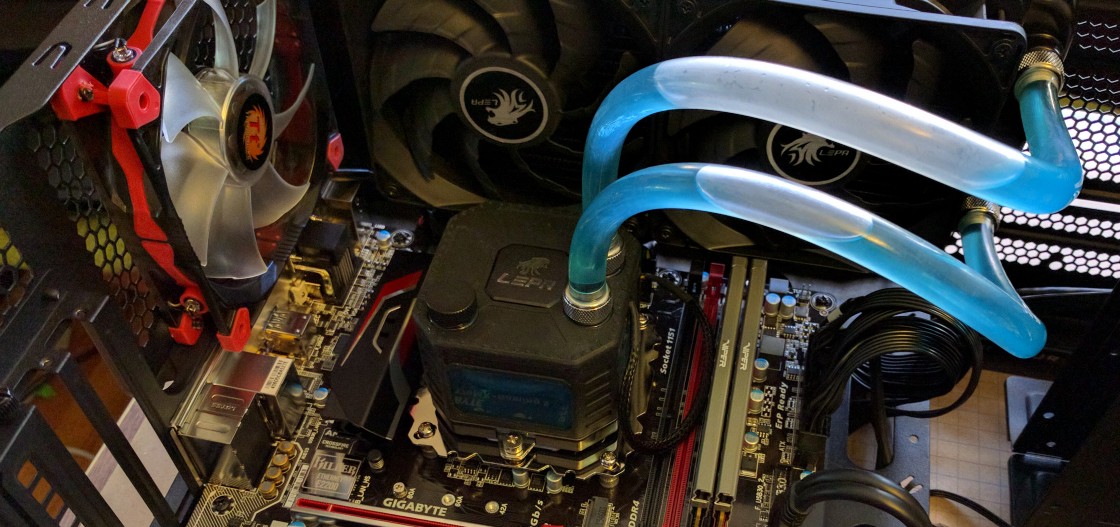I built an awesome VR rig and you can too

Introduction
I loved going to virtual reality conferences as a kid. I even build my own rig with a modified nintendo power glove for input, fresnel lenses tapped to my monitor for stereoscopic viewing, and REND386 running on my 486DX to support it all. Yup, totally retro. That machine had a 212MB hard drive. Huge!!
Anyway, things have been ramping up for a second wave of VR and I decided it was finally time again to build a rig for exploring cyberspace (and maybe building bits of it too). Only this time, the hardware is way more advanced and way cooler. Electric blue liquid cooling cool.

This system rocks. I’ve been spending hours in space jumping between star systems with precious cargo, painting in 3D, slicing fruit with a samurai sword, and defending against zombies. And you can too.
There’s lots of ways to explore VR, including that awesome computer in your pocket called a smartphone. However, for this article I’m going to focus on the components I selected for a desktop machine to run room-scale VR.
Build notes
What you’ll need:
- Basic tools like a screwdriver and patience
- Basic computer hardware knowledge like what goes where and how to minimize static electricity
Seriously, that second point is important. If you haven’t built a computer before, you’ll want to read up on that separately.
The parts list
Selected and assembled in early 2016
- Graphics processing unit (GPU): Asus Strix GTX 980 Ti OC
- Central processing unit (CPU): Intel Core i7–6700K
- CPU Cooler: LEPA Exllusion 240 Liquid Cooler
- Motherboard: Gigabyte Z170MX-Gaming 5 LGA1151
- Storage: 512GB SAMSUNG 850 Pro Series SSD
- Power Supply: Thermaltake Toughpower Grand 1200W
- RAM: Patriot 16GB (2 x 8GB) Viper Elite Series DDR4 3200MHz
- Case: Thermaltake Core V31
- Operating System: Windows 10
Parts notes
Graphics processing unit (GPU): Asus Strix GTX 980 Ti OC
This is the most key decision for a VR system. The GPU is the workhorse for your graphics-intensive applications. Although sound is mostly a solved problem (the integrated sound support on the motherboard I’ve selected is plenty good enough) graphics cards are still evolving rapidly. The card I selected was based on the most recent Nvidia chipset. Was. They’ve got a 1080 series that just started shipping in May 2016. It has some great VR-specific capability. So, you may want to look for one of those instead.
These cards typically come in a reference version (built by the chip maker) and a licensed version (built by other manufacturers). The differences are often varied and subtle. I recommend finding an article like this one that does all the work and then let’s you know the overall best performing card.
Central processing unit (CPU): Intel Core i7–6700K
I just went for the best Intel chip that my budget would allow. Chips always get better, so it doesn’t help to think about this one too hard.
CPU Cooler: LEPA Exllusion 240 Liquid Cooler
The last system I built just had a hunk of metal on the CPU to radiate heat. Processors today heat up a lot more and therefore require much more cooling. I went for liquid cooling to reduce overall noise. A quiet machine makes for a nicer room as well as less distraction while gaming. Also, this cooling unit comes with transparent tubes and dye — so I matched the coolant color with the light blue of my fans.
Motherboard: Gigabyte Z170MX-Gaming 5 LGA1151
This needs to support your processor type and allow for all your peripherals to connect. I’d heard some folks recommend this one and it met all my connection needs.
Storage: 512GB SAMSUNG 850 Pro Series SSD
Data read latency can interrupt the experience, which will break immersion (the feeling of being there). So, you’ll want an SSD. This is a solid one that should last a long time. Wirecutter likes it too.
RAM: Patriot 16GB (2 x 8GB) Viper Elite Series DDR4 3200MHz
For the same reasons listed in the previous section, you’ll want a substantial amount of fast RAM. I chose a set at 3200MHz because it was at the right place in the effective speed / price curve. Way more details here.
Power Supply: Thermaltake Toughpower Grand 1200W
Admittedly, this is overkill. I’m not using this much power. However, at the time I spec’d this machine, I thought there was a possibility I would eventually run two GPU boards in parallel. In that case, the extra power would have come in handy.
Case: Thermaltake Core V31
Not too big, but big enough to contain everything listed here. Also, it has a window so you can see all the pretty lights.
Cross-posted to Medium
The Developer Show — TL;DR 026
Highlights: New APIs for Scroll Performance, Ruby on Google App Engine goes Beta! Have a question? Use #AskDevShow to let us know!
Improve Scroll Performance
Studies have shown that an increase in performance leads to happier, more engaged users. Which is why you should check out this post on the new APIs in Chrome to help you improve scroll performance.
Ruby on Google App Engine goes beta
Frameworks like Ruby on Rails and Sinatra make it easy for developers to rapidly build web applications and APIs for the cloud and App Engine provides an easy to use platform for developers to build, deploy, manage, and automatically scale services on Google’s infrastructure. Which is why we’re excited that Ruby runtime on Google App Engine is going beta. For more details and links to the getting started guides, samples, and interactive tutorials, check out the post.
Page 50 of 63
subscribe via RSS